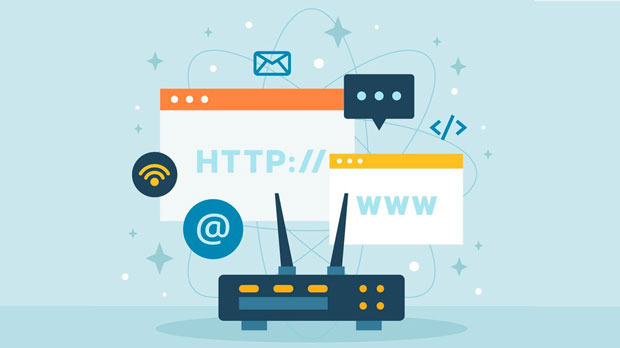The internet has evolved into a global network, providing users with access to a vast amount of information. However, content is often geographically restricted, creating a barrier for users in different regions. Proxies—tools that allow users to mask their IP addresses and access content from different locations—have become essential in bypassing these restrictions. Among the many types of proxies available, free proxies and paid proxies are the most commonly used. While both serve the same primary purpose of facilitating cross-regional content access, the user experience between the two differs significantly. In this article, we will examine the differences in performance, security, reliability, and user experience when using free proxies compared to paid proxies for accessing region-restricted content. Understanding Free ProxiesFree proxies are available at no cost and can be easily accessed through a simple search on the internet. These proxies are widely used by casual internet users who want to access region-locked content, such as streaming services or websites with geo-restrictions. Free proxies operate by routing a user's internet traffic through a third-party server located in another region, allowing users to appear as though they are browsing from that region.However, despite their accessibility, free proxies have a number of limitations that can impact the user experience.Limitations of Free Proxies1. Slow Speeds and Unreliable Performance: One of the biggest drawbacks of free proxies is the slower connection speeds they often provide. This is because free proxies are typically hosted on servers with limited resources, and they are shared by many users at once. As a result, the servers can become overloaded, leading to slower internet speeds. This issue is particularly noticeable when streaming video content or trying to access websites that require a stable connection.2. Lack of Security and Privacy Risks: Free proxies generally lack strong encryption protocols, leaving users vulnerable to data theft or cyberattacks. In many cases, free proxy providers do not offer any form of data protection, which means sensitive personal information such as login credentials, financial data, and browsing history can be exposed to malicious actors.3. Frequent Downtime and Accessibility Issues: Because free proxies are often hosted on low-budget servers, they can experience frequent downtime or become temporarily unavailable. Additionally, many websites actively block IP addresses from known free proxy servers, which means users might not be able to access certain content even if they use a free proxy service.Understanding Paid ProxiesPaid proxies, on the other hand, are premium services that users must pay for. These proxies are typically offered by dedicated proxy providers and are more reliable, faster, and secure than free proxies. Users who require consistent and high-performance access to cross-regional content, such as businesses, marketers, and frequent travelers, are more likely to opt for paid proxies.Paid proxies come with various benefits that significantly improve the content access experience.Advantages of Paid Proxies1. Faster and More Stable Connections: Paid proxy services tend to provide faster speeds and more stable connections. This is because paid proxies are hosted on high-performance servers with more robust infrastructure. As a result, users can experience faster browsing, smoother streaming, and more reliable access to region-restricted content.2. Enhanced Security and Privacy Protection: Paid proxies offer stronger security features, such as encrypted connections and more advanced protocols. This ensures that users' online activities are kept private and their personal data is protected from cyber threats. Moreover, paid proxy providers often implement stricter policies regarding data handling, further enhancing users' privacy.3. Access to Exclusive IP Addresses and Locations: One of the key advantages of paid proxies is the access to a wide range of IP addresses from multiple locations around the world. This is especially valuable for businesses and individuals who need to access content from specific regions or test how their websites appear in different countries. Paid proxy services often provide dedicated IPs that are not shared with other users, offering a higher level of exclusivity and reliability.4. 24/7 Customer Support: Paid proxy services typically come with customer support options to assist users with technical issues or troubleshooting. In contrast, free proxy services usually offer no support or only basic guidance, leaving users to resolve problems on their own.Comparing User Experience: Free Proxies vs. Paid ProxiesThe user experience when using free proxies vs. paid proxies can vary significantly. While free proxies may seem appealing due to their no-cost nature, the limitations in speed, security, and reliability make them less suitable for consistent use. Users who prioritize performance and security are likely to encounter frustration with free proxies, especially when accessing region-locked content like streaming services, online gaming, or sensitive websites.In contrast, paid proxies provide a much smoother and more secure experience. The investment in a paid proxy service typically pays off in terms of faster connection speeds, more stable access, and enhanced security. Additionally, the level of customization and customer support available with paid proxies makes them more appealing to users who need a dependable solution for cross-regional content access.Cost Considerations: Is It Worth Paying for Proxies?The decision between using free proxies or paid proxies ultimately comes down to cost and purpose. Free proxies may be suitable for occasional browsing or accessing non-sensitive content, but for regular and reliable access to region-restricted material, especially for work or business purposes, paid proxies are a better investment.Paid proxies come with various pricing plans, depending on the type of service (e.g., shared or dedicated IPs) and the provider's infrastructure. While the cost can range from a few dollars to hundreds of dollars per month, the reliability, security, and performance gains are often worth the expense.Conclusion: Making the Right ChoiceIn conclusion, both free and paid proxies serve the purpose of facilitating cross-regional content access, but they differ vastly in terms of performance, security, reliability, and user experience. While free proxies may be a good option for casual or short-term use, they fall short in delivering a smooth and secure browsing experience, especially when accessing geo-blocked content. On the other hand, paid proxies provide a more robust, secure, and reliable service, making them the ideal choice for users who require consistent and high-performance access to region-restricted material. Ultimately, the decision to use free or paid proxies depends on the specific needs and priorities of the user. For a seamless and secure content access experience, investing in paid proxies is often the best option.
Nov 10, 2025


































































